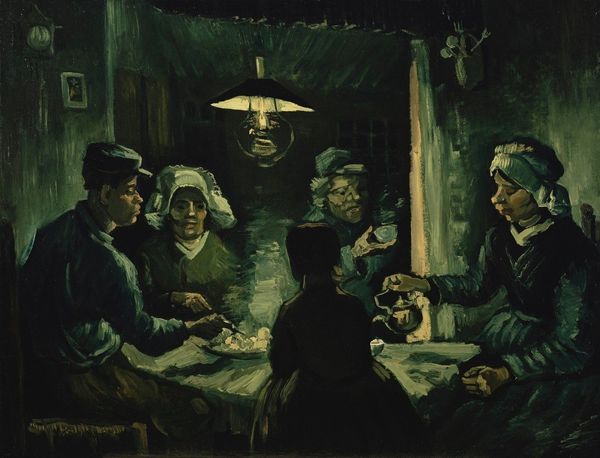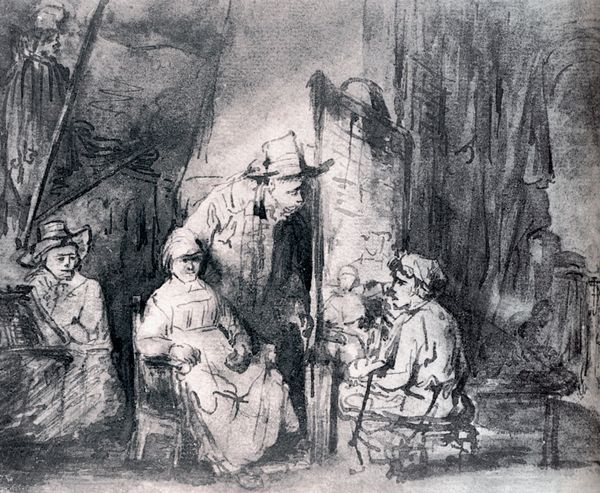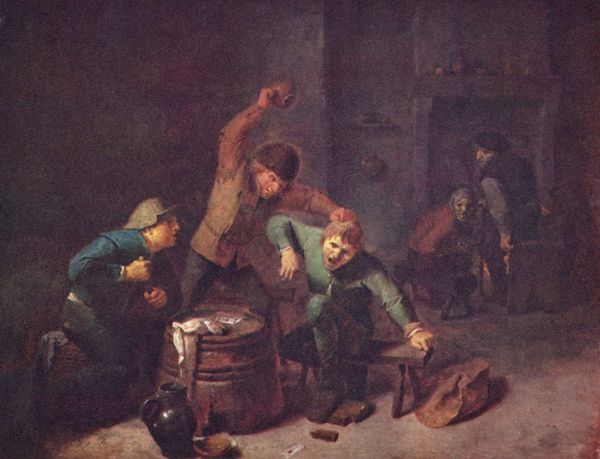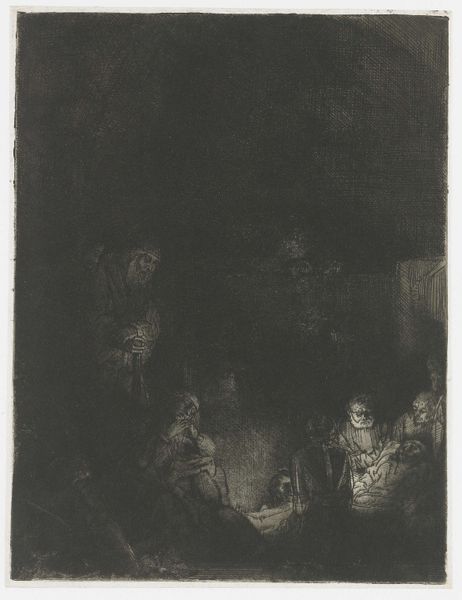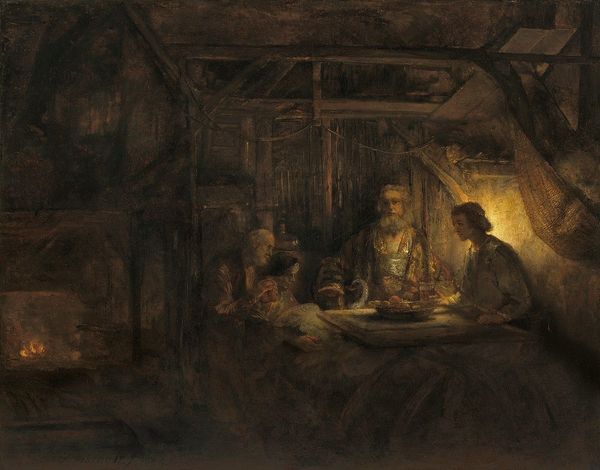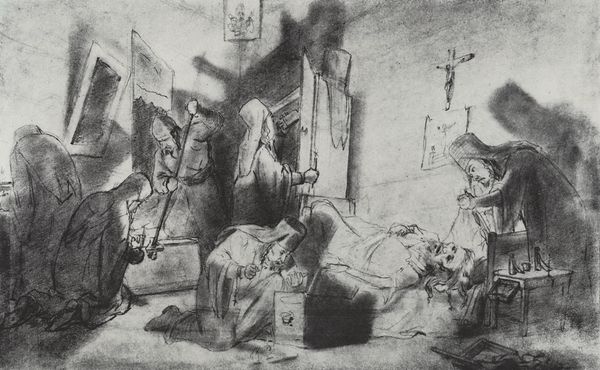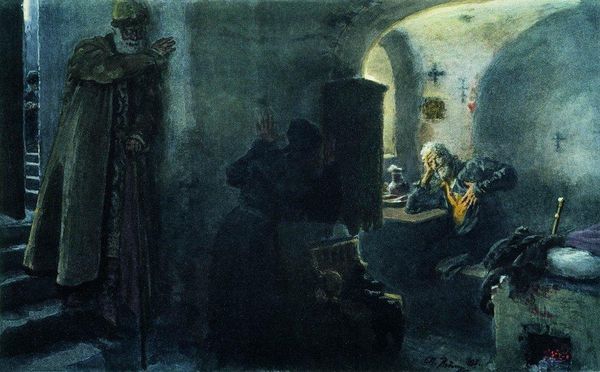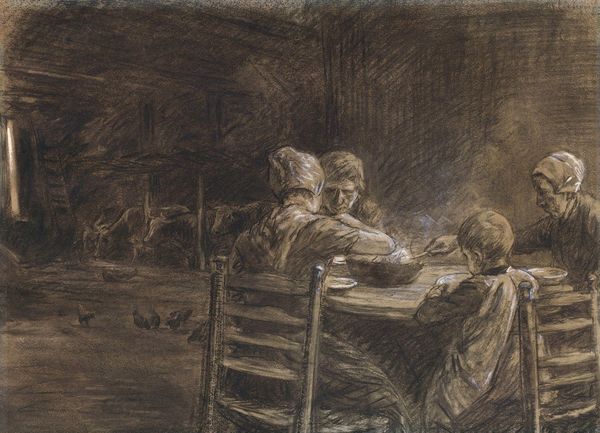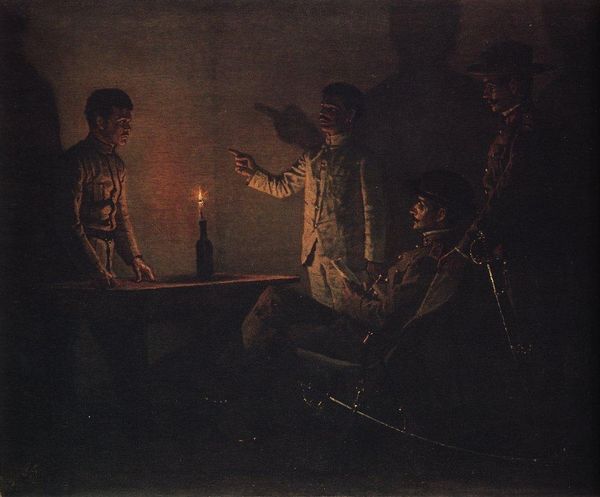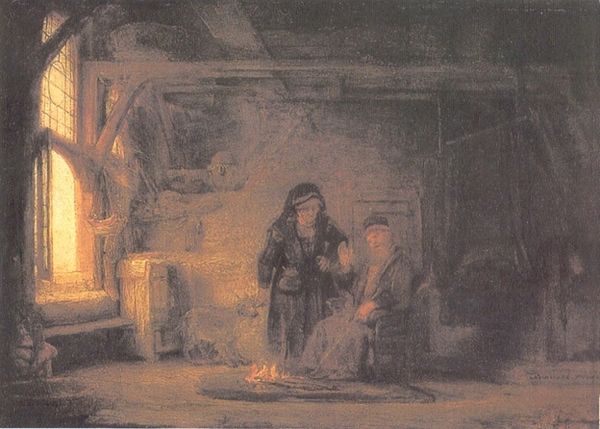
Copyright: Public domain
Vincent van Gogh made this oil study in the Netherlands as preparation for his painting 'The Potato Eaters'. It shows four peasants gathered around a table, sharing a meager meal under the dim light of an oil lamp. Painted in the 1880s, this work reflects the social realities of rural life in the Netherlands, marked by poverty and hardship. Van Gogh aimed to depict the peasants honestly, capturing their toil-worn faces and the simplicity of their surroundings. The dark, earthy tones evoke the somber atmosphere of their existence, while the close proximity of the figures emphasizes their sense of community and shared struggle. But it’s not just an image of peasant life, it reflects the institutions that shape the art world. Van Gogh’s effort to accurately represent the lives of the working class, rather than idealizing them, was a conscious choice against the established norms of the art academy. Understanding such a work requires attention to the social conditions of the time. Using resources such as letters, census records, and social histories can provide a better understanding of the cultural context in which the art was produced.
Comments
No comments
Be the first to comment and join the conversation on the ultimate creative platform.
